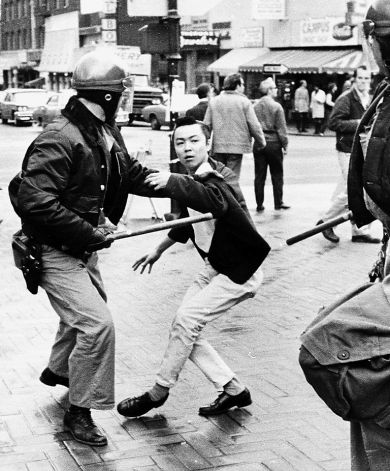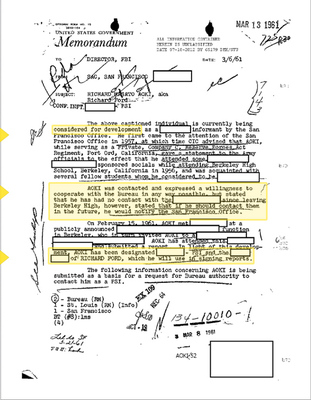
Reforms Won't End Indefinite Isolation
We can’t afford for prisoners to sacrifice their lives because self-appointed vanguards refuse to do a little philosophic/scientific homework and make a few minor adjustments to our current path. We’re pursuing what is essentially a tactical issue of reforming the validation process as if it were a strategic resolution to abolishing social-extermination of indefinite isolation. This is not a complex issue to understand, and it requires a minimal amount of study at most to understand that the validation process is secondary and is a policy external to the existence of the isolation facilities. It’s not difficult to comprehend that external influences create the conditions for change but real qualitative change comes from within, and to render the validation process, program failure, the new step down program, etc, obsolete, and end indefinite isolation, requires an internal transformation of the isolation facilities (SHU and Ad-Seg) themselves. Otherwise, in practice, social extermination retains continuity under a new external label. Appearance is reformed, hence the suffix “re”, while the essential composition (contradictions) is unchanged. Do you fix a bad motor on a car by altering its appearance with a new paint job? It might look nice, but it’s still the same motor.
I don’t know if these “representatives” are just refusing to consider anything else, if they are making a conscious decision to hear the sound of their own voices only, or if they believe that to acknowledge a need for course adjustments will discredit them. They hold power in here, but it’s a power held through threat of force, and most youngsters aspire to this, or those who don’t, understandably keep their mouths zipped. Either way, because of this power, they’re not used to hearing the truth, but praise form the brown-nosers who tell them what they think they want to hear and tell them what will benefit them. This only hinders the accuracy of their analysis. This refusal to be more receptive and adjust course where necessary based on an application of dialectical materialism is going to cost us lives pursuing an incorrect course. Our victories are superficial and exist more in appearance than anything. They are privileges, rights that we already had coming to us, so what appears as a victory is really implementing our established rights (abstractly anyhow), without actually making essential progress. It’s a vehicle to distract us without actually conceding essential transformations. And these are, and will be, reversible.
Although it is dangerous, and all it takes is for the current so-called reps to openly denounce any true vanguard, all others will accept this proclamation, and the true vanguard will be discredited and hit first opportunity. So a true vanguard must tread very carefully to build large scale support with their ideas and education. But what’s of greatest importance, it must be done in the interest of all! As we, you and I, know, a vanguard is not someone, a program, philosophic logic, etc, that appoints itself, it is the most advanced line and it must be complemented with a corresponding practice. As Lenin and Joe Steel said, “there can be no theory there can be no movement” Just as a “movement is necessary to develop theory upon.” Obviously, I’m paraphrasing but the point is evident.
I’m convinced we need to circulate a few pamphlets that serve an educational purpose, but more importantly, function as an outline. And if necessary, appeal to convict mass to launch our own hunger strike, one or two at a time. Write up our own list of demands - tables in each pod, phones, bars, cellies, dayroom time for social intercourse, demands that can all be achieved by a victorious struggle for “association” based on U.S. constitutional rights and UN Geneva conventions (for publicity). To implement “association” (social intercourse) would necessitate the peripheral demands above and thus qualitatively change the isolation units from within as we currently know them.
MIM(Prisons) responds: Control Units are isolation cells within prisons where people are confined to small cells for long periods of time. Control units are a common tool of repression throughout the Amerikan prison system, frequently used to target prisoners who are actively fighting for their rights. They target Black, Latino and indigenous people who are a disproportionate part of control unit populations.
As a part of our ongoing campaign to shut down the control units, we fight for reforms to give our comrades in indefinite isolation some improved conditions, especially when these reforms are focused on better enabling their political study and organizing. We recognize that some reforms may mean the difference between physical or mental health or serious illness. But we agree with this author that we need to fight the attempts by proponents of the criminal injustice system to paint a happy face on long-term isolation and call that “reform.” It is only by ending long term isolation completely will we actually win this battle.





 Alabama
Alabama
 Alaska
Alaska
 Arizona
Arizona
 Arkansas
Arkansas
 Army Post
Army Post
 California
California
 Colorado
Colorado
 Connecticut
Connecticut
 Delaware
Delaware
 District of Columbia
District of Columbia
 Federal
Federal
 Florida
Florida
 Georgia
Georgia
 Guam
Guam
 Hawaii
Hawaii
 Idaho
Idaho
 Illinois
Illinois
 Indiana
Indiana
 Iowa
Iowa
 Kansas
Kansas
 Kentucky
Kentucky
 Louisiana
Louisiana
 Maine
Maine
 Maryland
Maryland
 Massachusetts
Massachusetts
 Michigan
Michigan
 Minnesota
Minnesota
 Mississippi
Mississippi
 Missouri
Missouri
 Montana
Montana
 Nebraska
Nebraska
 Nevada
Nevada
 New Hampshire
New Hampshire
 New Jersey
New Jersey
 New Mexico
New Mexico
 New York
New York
 North Carolina
North Carolina
 North Dakota
North Dakota
 Ohio
Ohio
 Oklahoma
Oklahoma
 Oregon
Oregon
 Pennsylvania
Pennsylvania
 Puerto Rico
Puerto Rico
 Rhode Island
Rhode Island
 South Carolina
South Carolina
 South Dakota
South Dakota
 Tennessee
Tennessee
 Texas
Texas
 Utah
Utah
 Vermont
Vermont
 Virginia
Virginia
 Washington
Washington
 West Virginia
West Virginia
 Wisconsin
Wisconsin
 Wyoming
Wyoming


